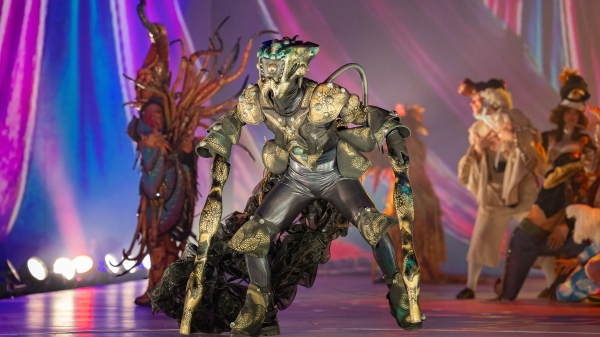ASU professor uses Latin music and dance to create an interactive community event

The Latin dance party, or pachanga, is held each semester for people of all ages to enjoy and participate in the music however they like — by sitting and listening, singing along or dancing. The next one is 6 p.m. Wednesday, Nov. 14, in the School of Music's fountain courtyard.
Theodore Solis, a professor in Arizona State University's School of Music, uses Latin music to teach performers and audience members how to connect music and dance. Solis created a unique version of the Latin dance party known as a pachanga by uniting performers and audience through playing, singing and dancing — all at the same time and to all types of Latin music.
When Solis joined the School of Music in 1989, he formed a Latin marimba ensemble band, Marimba Maderas de Comitán, based on the Mexican marimba music he had been playing for years. Solis had conducted extensive research on marimba music for his PhD dissertation and said that marimba music in Mexico and Central America is usually dance music, or “bailables.”
“Music and dance have always been very closely connected, but American musicians tend to separate music and dance and, in fact, are often uncomfortable with dancing,” said Solis. “This changes for anyone involved in the ensemble and for many of the others attending the event. Everyone present, in whatever capacity, benefits by having a heck of a good time.”
Solis said he loves both audience interactions and dancing. As director of the ensemble, he gradually changed the ensemble’s stage concert from a presentation with clear performer-audience distinctions into an interactive dance party.
The party, or pachanga, is held each semester for people of all ages to enjoy and participate in the music however they like — by sitting and listening, singing along or dancing. Solis said he works to eliminate distinctions between performers and audience members so that everyone is involved in creating a happy, enjoyable event.
The ensemble plays new and old favorites and teaches the steps for a wide variety of dances, including Cuban-type salsa, bolero and son montuno; Dominican merengue; Afro-pop rumba; Mexican group zapateado; Colombian cumbia; Puerto Rican guaracha and Andean dances like huayño and sanjuanito. Different percussion is played depending on the style of music.
Solis’ Latin marimba ensemble is different from a traditional Mexican, Guatemalan or marimba band because of the audience and performer interaction and the atypical way the audience is taught the dance steps for each piece.
According to Solis, students in the ensemble benefit by learning to play and improvise in traditional Latin styles. He said they also learn music aurally, improve their harmonic sense by harmonizing without any notation and learn to dance and multitask by singing, playing and dancing simultaneously.
ASU Marimba Maderas de Comitan presents Latin Dance Pachanga
When: 6 p.m. Wednesday, Nov. 14.
Where: School of Music fountain courtyard.
Details: Free and open to the public.
More Arts, humanities and education

ASU student finds connection to his family's history in dance archives
First-year graduate student Garrett Keeto was visiting the Cross-Cultural Dance Resources Collections at Arizona State University…

ASU alumna makes her way back to the ASU Gammage stage for '¡azúcar!'
As the Los Angeles-based CONTRA-TIEMPO dance group prepares for its upcoming production “¡azúcar!” at ASU Gammage, for one member…

ASU FIDM professor wins international award for fantastical, sustainable creation
The horror of an ailing Earth inspired an Arizona State University fashion professor to create a fantastical garment out of…